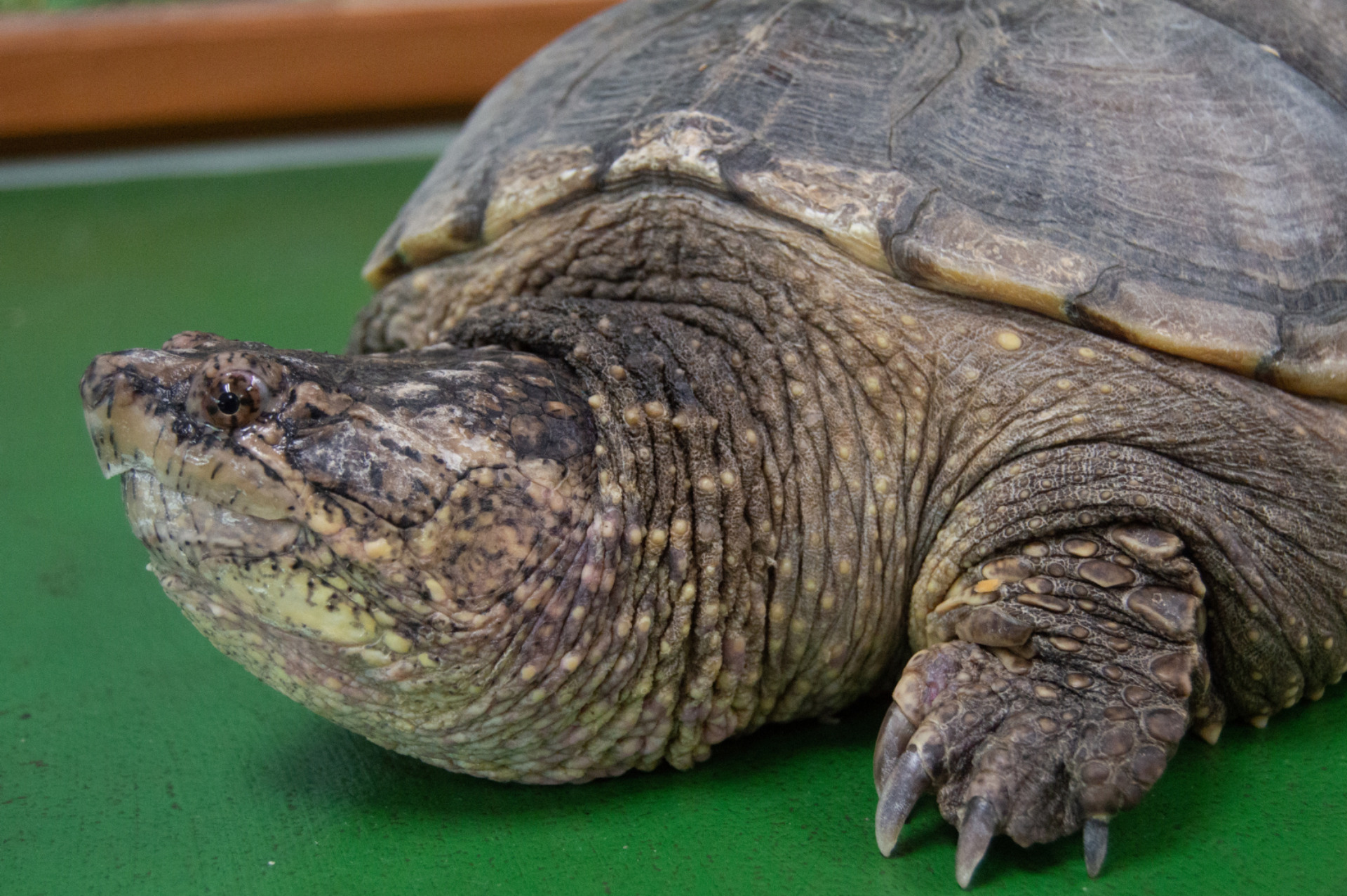Common Snapping Turtle

Basic Information:
Scientific Name: Chelydra serpentina
Habitat: Snapping turtles are mostly aquatic and can be found in a wide variety of aquatic habitats in to United States to the east of the Rocky Mountains.
Diet: Common snapping turtles are omnivores that feed on plants, insects, spiders, worms, fish, frogs, small turtles, snakes, birds, crayfish, small mammals, and carrion. Plant matter accounts for about a third of the diet.
Size: 0.7 to 2 feet long
Weight: 10 to 75 pounds
Lifespan: 50 to 75 years
Distribution Map:
I.U.C.N. Conservation Status:

What does this mean?
Least Concern – a species determined by the International Union for Conservation of Nature (I.U.C.N.) to be pervasive, abundant, and thriving.
Our Common Snapping Turtle:
Lucky (Male) – Estimated Date of Birth Between May 2001 & May 2005
About Common Snapping Turtles:
Despite their intimidating disposition, Common Snapping Turtles are usually calm and non-aggressive. This is mostly due to the fact that – in their habitat – they are typically the apex predator and have no threats against them once they are fully grown. If they ever spot something out of the ordinary for them, they usually observe it with curiosity more than anything else. That being said, their sharp beak is very effective at getting their prey. To hunt, they will often sit perfectly still and wait for food to swim by them. In fact, they can wait for so long that moss is known to start growing on their shell. However, once a delicious meal wanders nearby, snapping turtles shoot out their neck and snap down on their victims with a force of approximately 47 pounds.
Did You Know?!
- Common snapping turtles like to bury themselves in mud with only their nostrils and eyes exposed. They ambush their prey by lunging forward with the head at high speed and powerful jaws to seize prey.
- Common snapping turtles evolved about 40 million years ago and are the ancestors of about 80% of all the turtles today.
- Because snapping turtles spend so much time motionless in the water, their shell commonly grows algae and moss.
